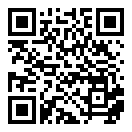Pages:
5-38
Receive Date: 2025/12/02
Accept Date: 2025/12/02
Abstract:
The aim of this paper is to illustrate the different aspects of the process of behavioral development in learning and present a critical review of this process. The review is mainly based on Islamic doctrines and uses a documentary method. The mentioned approach defines behavioral development as a way of "learning how to display the social behavior which, according to certain, community is acceptable and which is confirmed through its consequences". The scope of this process is "the acceptable social behavior", and it main component is "moral behavior" as distinct from behavioral recognition and excitement, and reinforcement of, especially its social form, is counted as its main mechanism. Rejecting the dominant values and the values derived from meta-social sources, non-extension of the boundaries of morality to the moral behaviors which are inconsistent with existing norms, disregarding the cognitive and emotional components of morality and neglecting the mechanisms other than reinforcement are the main shortcomings that, according to Islamic view, represent a challenge to the positions of this approach.
چکیده و کلیدواژه فارسی (Persian)
Title :بررسی انتقادی «رویآورد یادگیری به رشد اخلاقی» از منظر قرآن
Abstract:
هدف این مقاله، توصیف جنبه های مختلف فرایند رشد اخلاقی در روی آورد یادگیری و بررسی انتقادی آن، به ویژه از طریق تعالیم اسلامی و به روش اسنادی است. روی آورد مزبور، رشد اخلاقی را «یادگیری انجام رفتار اجتماعی مورد پذیرش جامعهی خاص، که از طریق پیامدهای آن تقویت می شود» توصیف می کند. گستره این فرایند، «رفتار اجتماعی پذیرفته شده» و مؤلفه اصلی آن «رفتار اخلاقی»، در برابر شناخت و هیجان اخلاقی، بوده و تقویت، به ویژه شکل اجتماعی آن، سازوکار عمده به شمار می رود. عدم پذیرش ارزش های ذاتی و نیز ارزش های اخذ شده از منابع فرااجتماعی، عدم تسری مرز اخلاق به رفتارهای اخلاقی ناسازگار با هنجارهای موجود، نادیده گرفتن مؤلفه های شناختی و هیجانی اخلاق و غفلت از سازوکارهایی غیر از تقویت، کاستی های عمده ای است که از دیدگاه اسلامی مواضع این روی آورد را به چالش می کشد.
References:
- السون، ام، اچ و هرگنهان، بى، آر، 2009، مقدمهاى بر نظريههاى يادگيرى، ترجمة علياكبر سيف، تهران، دوران.
- باقري، خسرو، 1377، مباني شيوههاي تربيت اخلاقي، تهران، سازمان تبليغات اسلامي.
- پياژه، ژان، بيتا، ديدگاه پياژه در گستره تحول رواني، ترجمة محمد منصور و پريرخ دادستان، تهران، بعثت.
- راغب اصفهاني، حسينبن محمد، 1412ق، المفردات في غريب القرآن، بيروت، دارالعلم.
- طباطبائى، سيدمحمدحسين، 1417ق، الميزان فى تفسير القرآن، قم، جامعه مدرسین.
- مجلسی، محمدباقر، 1413ق، بحارالأنوار، بيروت، داراحياء التراث العربي.
- محسني، نيکچهره، 1371، «ارزشهاي اخلاقي در نظريههاي مختلف روانشناسي»، علوم تربيتي، ش 4-3، ص 1-29.
- ـــــ، 1390، نظريهها در روانشناسي رشد، تهران، آگاه.
- مصباح، محمدتقي، 1387، خودشناسي براي خودسازي، قم، مؤسسه آموزشي و پژوهشي امام خميني.
- مکارم شيرازي، ناصر، 1353، «خفتگان شهر افسوس»، درسهايي از مکتب اسلام، سال پانزدهم، ش 5، ص 4-7.
- Bonjeh, M, & Ardila. R, 1987, Philosophy of Psychology, New York: Springer-Verlag.
- Feist, J, & Feist. G, 2008, Theories of personality, New york: McGraw-Hill.
- Freud, S, 1923, The ego and the id, New York: Norton.
- Grusec, J, E, 1992, Social learning theory and developmental psychology: The legacies of Robert Sesrs and Albert Bandura, Developmental psychology, v. 28, p. 776-786.
- Grusec, J. E, 2006, The development of moral behavior and conscience from a socialization perspective, In M. Killen & J. Smetana, (Eds.), Handbook of moral development, London: Lawrence Erlbaum Associates, Publishers.
- Hetherington, E. M, & Parke, R. D, 1986, Child psychology: A contemporary viewpoint, London: MC Graw- Hill Book Company.
- Killen, M, & Smetana, J, 2006, Handbook of moral development, London: Lawrence Erlbaum Associates, Publishers.
- Lapsley, D. K, 2006, Moral stage theory, In M. Killen, & J. Smetana, Handbook of moral development, London: Lawrence Erlbaum Associates, Publisher.
- Lefranco, R, G, 1999, Theories of learning, CA: Belmont.
- McCabe, S. P, 1992, Historical background of the psychology of moral development, In T. R. Knowles and G, F. McLean (Eds), Psychological Foundations of Moral Education and Character Development: An Integrated Theory of Moral Development, Washington, CRVP.
- Miller, P. H, 2011, Theories of developmental psychology, New York: Worth Pub.
- Piaget, J, 1932, The Moral Judgment of The Child, London: Routledge and Kegan Paul.
- Reber, A. S, & Reber. E, 2009, The penguin dictionary of psychology, London, Penguin Books.
- Skiner, B. F, 1971, Beyond freedom and dignity, London: Penguin Books.
- Skinner, B. F, 2005, Science and human behavior, New York: Free Press.
- Smetana, J. G, & Turiel, E, 2003, Morality during adolescence, In G. R. Adams & M. Berzonsky (Eds.), The Blackwell Handbook of Adolecence, Oxford, UK: Blackwell.
- Turiel, E, 2002, The culture of morality: Social development, Context and conflict, Cambridge, England: Cambridge University Press.
Cite this article:
RIS
Mendeley
BibTeX
APA
MLA
HARVARD
VANCOUVER
APA | MLA | HARVARD | VANCOUVER
Karimzadeh, Sadegh.(2025) A Critical Investigation of the Learning Approach to Moral Development according to the Quran. Ravanshenasi Wa Din, 7(2), 5-38
APA | MLA | HARVARD | VANCOUVER
Sadegh Karimzadeh."A Critical Investigation of the Learning Approach to Moral Development according to the Quran". Ravanshenasi Wa Din, 7, 2, 2025, 5-38
APA | MLA | HARVARD | VANCOUVER
Karimzadeh, S.(2025) 'A Critical Investigation of the Learning Approach to Moral Development according to the Quran', Ravanshenasi Wa Din, 7(2), pp. 5-38
APA | MLA | HARVARD | VANCOUVER
Karimzadeh, S. A Critical Investigation of the Learning Approach to Moral Development according to the Quran. Ravanshenasi Wa Din, 2025; 7(2): 5-38




